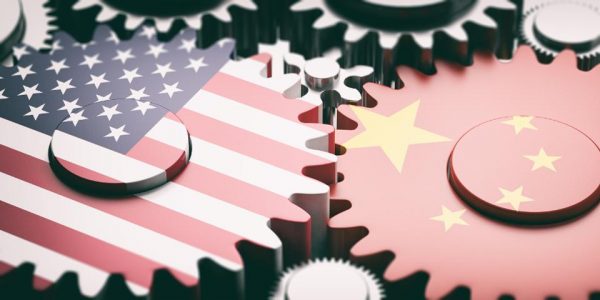U.S. And China Technology Conflict—Here’s Why 2020 Is So Critical – Forbes

Getty
As we approach 2020, the heated technology conflict between the U.S. and China shows no signs of a thaw. U.S. President Trump’s campaign against leading Chinese technology firms—including but not only Huawei—may have grabbed the headlines, but there is also China banning most leading U.S. consumer content-based technologies, Russia architecting its sovereign internet, political pressure on western tech players over international research collaboration. As we approach 2020, a decade and more of ever-tightening technology globalisation looks very much at risk.
A key part of the divide is the so-called splinternet or balkanisation of the internet, where mass-scale technology filters enable governments to determine what content will be made available to its citizens—China, Russia, Iran and Saudi Arabia continue to restrict what’s allowed and what isn’t, but at a lower level many other countries nibble around the edges of what’s green-lit and what isn’t. But, in the main, this is all around content. Certain websites and online services, communications platforms, news sites, social media, content sharing. That issue, though, is about to get deeper.
Ironically, even as content censorship has become more widespread, the main technology platforms have maintained their global lock. Largely influenced by U.S. standards, we have been using the same mobile and desktop operating systems, the same mainstream applications. An ever more globetrotting population has been able to disembark a flight almost anywhere, switch on, connect. Gone are the dark old days of competing standards, where Europe, the U.S. and Japan pursued different tracks.
Two seemingly unrelated—but actually very much related—news items in December are perfectly illustrative of the risks technology standardisation now faces. First came the hints from Huawei that nine months into its U.S. blacklisting, restricting its access to American technology, the world’s largest telecoms equipment manufacturer may be about to forge its own alternative to the standard Android software and services used by more than 2 billion users around the world. For the first time in more than a decade, there might be a genuine alternative to Google’s full-fat Android and Apple’s more heavily controlled iOS. And, unlike other tries, Huawei has 42% of the huge Chinese market and more than 25% of the Russian market to get it started.
Then on December 28, China’s state media announced that its “Beidou” alternative to America’s GPS satellite navigation system will be completed. This is more than a competitive alternative, this is a strategic disconnect from a core U.S. technology. China even heralded the fact that Beidou’s 35 satellites will match or even exceed the global gold standard GPS network. Again, as with Huawei’s mobile operating system, there is a ready market for the new technology. More than 70% of China’s smartphones are equipped to use the new network, and, with China’s joined-up approach, the new network will be used to help drive 5G services and adoption.
But Beidou—“Big Dipper” in Chinese—will not stop at China. It will focus on converting markets in South East Asia, Africa and Eastern Europe, price- and investment-sensitive markets. It will follow China’s Belt and Road initiative to match infrastructure investment to political influence. It will also, if the claims are accurate, provide enhanced levels of accuracy that with GPS are reserved for specialist—read security and military—users of the service. Expect immediate headlines on the benefits to self-driving vehicles, agriculture, critical infrastructure management.
“You don’t have to look hard to find evidence that the Chinese government is willing and able to use its growing influence over global commerce to advance its own interests,” Federal Communications Commission Chairman Ajit Pai told the Council on Foreign Relations in November. His warning focused on Huawei’s role in international 5G networks and on China using its influence to curb political criticism of its domestic policies. But the theme, that east-west split, was evident throughout.
We exit 2019 in very different shape to the way we started it. Theoretical splits have become more a reality. Much of the world is being pushed to choose between U.S. political and security engagement and Chinese investment and commerce. Russian President Putin described the U.S. campaign against Chinese technology as “the first technological war of the coming digital era.” His point was that this is the start of something much greater and more significant.
And so to 2020. There are some critical decision points we will witness early in the year, all of which carry significant implication as to the extent or pace of a split. There is Canada’s imminent legal decision on the U.S. request to extradite Huawei CFO Meng Wanzhou. There is the U.K. and Germany decisions on allowing Huawei into their respective networks. There is the launch of Huawei’s flagship P40 device, which could launch its alternative to Google’s software and services into international markets. There is the decision by the U.S. Commerce Department on how far and wide to relax supplier restrictions on American companies. And then, later in the year, there is the U.S. election, with a focus on the extent to which China and Russia might be implicated in interference attempts, escalating the rhetoric and the restrictions.
A reversal in technology globalisation will have a major impact on international businesses and on us as consumers and travellers. For China, it will increase its independence and influence. For the U.S., its grip on key standards will loosen and for some of its key players there are risks they could loose material market share. And so, while the direction of travel seems set, nothing is fixed. 2020 could see the political brakes applied to some of these changes under the guise of a trade deal or a new approach to technology security. But, either way, 12 months from now the flexibility in decision making now available to politicians will be significantly diminished.






